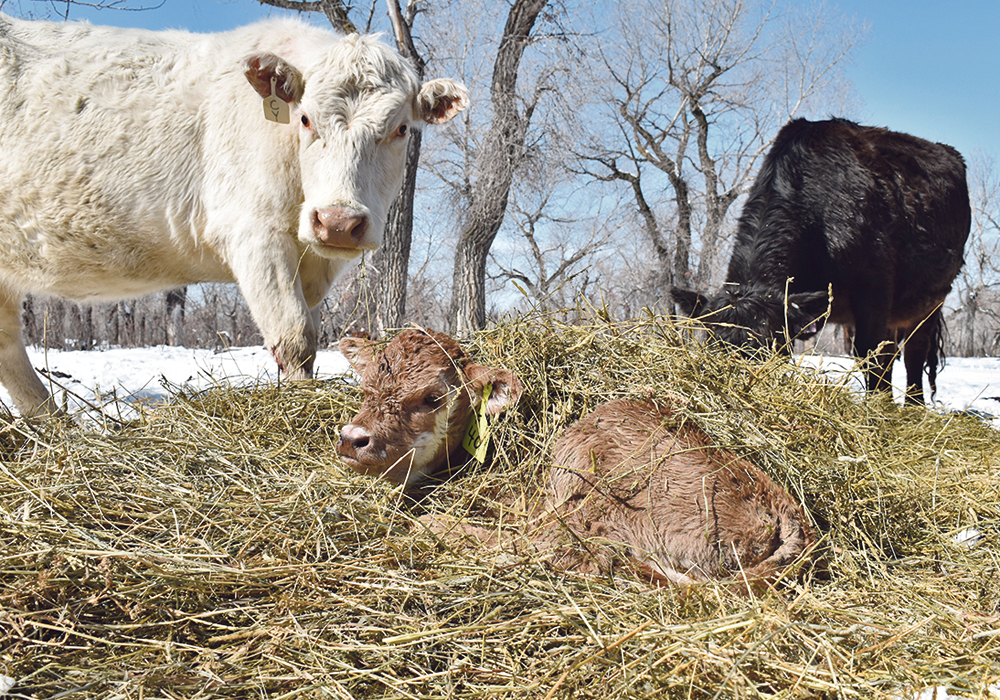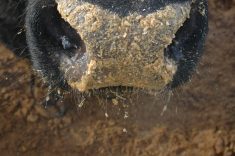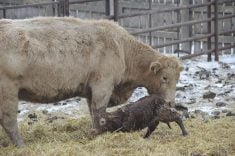Hygiene, colostrum and immune support are the keys to managing scours in newborn calves.
The illness is the number one killer of calves younger than two months old so prevention strategies and plans to handle occurring cases are needed to limit losses.
The hygiene element is somewhat self-explanatory and includes clean calving areas, sufficient space, clean bedding and disinfection of equipment used when assisting a birth or treating sick calves.
“Use a separate esophageal feeder for newborns, scours or (animals) sick with other conditions (and) keep it labelled and disinfect the tubes in between usages,” says Dr. Roy Lewis, a large animal veterinarian.
Read Also

New coal mine proposal met with old concerns
A smaller version of the previously rejected Grassy Mountain coal mine project in Crowsnest Pass is back on the table, and the Livingstone Landowners Group continues to voice concerns about the environmental risks.
“Put in a boot dip and use separate coveralls for treating calves versus working with newborns. Have an isolation area away from the calving barn for sick pairs. Use a calving suit for calving that can be washed up and wash the chains and calf puller before putting them away.”
Ensuring calves receive colostrum shortly after birth is key to keeping them healthy through maternally supplied antibodies. Research indicates calves are able to absorb colostrum very quickly after birth but that ability declines within 12 hours and is markedly reduced after 24 hours.
Colostrum is part of immune support for newborns but there are several products available to vaccinate cows and heifers well before calving time so their colostrum includes protection from scours for their calves.
“The good thing is the three scour vaccines on the market in Canada cover the majority of infectious scour organisms except cryptosporidiosis,” says Lewis.
Scours can be caused by viruses or by bacteria. Lewis says Clostridium perfringens is a common bacterial cause. The other one to be particularly wary of is Cryptosporidiosis, known more commonly as crypto, which is a diarrheal disease caused by a microscopic parasite.
“Guys will have outbreaks,” says Lewis. “It can strike farmers off guard because they think it’s standard scours.”
Standard scours treatments are ineffective against crypto and it often requires a veterinary assessment to determine the root cause.
In that case, “I’m really trying to prevent the first case because one case can become 10 and then 30,” he said. “There’s people out there that chronically have problems and won’t change how they’re doing things. Others guys have zero trouble. It can be a real thorn in your side.”
The disease is often related to manure management and use of the same calving area over a long period. Some types of crypto can affect humans, so hygiene comes into play.
“If (calves) get any scours cases, have your veterinarian check for cryptosporidiosis to rule it out. The best/first treatment should be electrolytes orally,” Lewis wrote in a scour prevention checklist.
Scours can also be caused by E. coli bacteria, typically spread through fecal contamination.
In the viral realm, bovine rotavirus and bovine coronavirus are potential culprits. These viruses affect a calf’s ability to digest and absorb milk, and in combination with bacterial infections can be dangerous to the animal.
Scours can also occur for nutritional reasons, such as incorrect type, feeding or mixing of milk replacer.


















